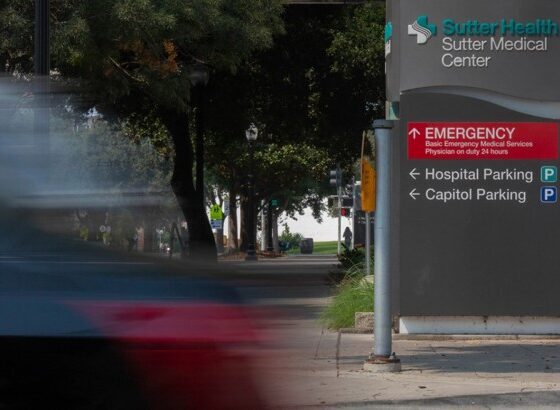Read about an alarming trend concerning physician practices that will most likely result in greater out of pocket costs to you. Consumers beware; you may pay more for your doctor’s visit than you previously thought. This growing movement is occurring nationwide and is becoming more prevalent as hospitals seek to increase their revenue streams in preparation for the upcoming implementation of the Affordable Care Act.
Insurers Say Rates Can Surge After Hospitals Buy Private Physician Practices; Medicare Spending Rises, Too
Wall Street Journal, August 27, 2012
After David Hubbard underwent a routine echocardiogram at his cardiologist’s office last year, he was surprised to learn that the heart scan cost his insurer $1,605. That was more than four times the $373 it paid when the 61-year-old optometrist from Reno, Nev., had the same procedure at the same office just six months earlier.
“Nothing had changed, it was the same equipment, the same room,” said Dr. Hubbard, who has a high-deductible health plan and had to pay about $1,000 of the larger bill out of his own pocket. “I was very upset.”
But something had changed: his cardiologist’s practice had been bought by Renown Health, a local hospital system. Dr. Hubbard was caught up in a structural shift that is sweeping through health care in the U.S.—hospitals are increasingly acquiring private physician practices.
Hospitals say the acquisitions will make health care more efficient. But the phenomenon, in some cases, also is having another effect: higher prices.
As physicians are subsumed into hospital systems, they can get paid for services at the systems’ rates, which are typically more generous than what insurers pay independent doctors. What’s more, some services that physicians previously performed at independent facilities, such as imaging scans, may start to be billed as hospital outpatient procedures, sometimes more than doubling the cost.
The result is that the same service, even sometimes provided in the same location, can cost more once a practice signs on with a hospital.
Major health insurers say a growing number of rate increases are tied to physician-practice acquisitions. The elevated prices also affect employers, many of which pay for their workers’ coverage. A federal watchdog agency said doctor tie-ups are likely resulting in higher Medicare spending as well, because the program pays more for some services performed in a hospital facility.
Renown said in a statement that cardiologists moving into hospital employment helps “eliminate duplication, improve coordination, and reduce hospitalizations,” and with “more proactive management of patients with heart disease, we are working to improve the health and well being of our patients.”
This year, nearly one-quarter of all specialty physicians who see patients at hospitals are actually employed by the hospitals, according to an estimate from the Advisory Board Co. That is more than four times as many as the 5% in 2000. The equivalent share of primary-care physicians has doubled to about 40% in the same time frame. Traditionally, most doctors who see patients at hospitals are in independent practice.
The structural shift is being driven partly by declining reimbursements for physicians, particularly in certain specialties like cardiology. Doctors are also being pressed to make new investments, such as introducing electronic medical records, and some are attracted to the idea of more regular hours with fewer administrative headaches.
Hospitals say they are bringing in physicians to improve care, integrate services and reduce waste, efforts encouraged by the Obama administration’s federal health-overhaul law. Higher reimbursement is needed in some cases, they say, because it costs more to operate outpatient clinics, which must meet strict regulatory requirements and often treat patients who lack insurance.
“You put a hospital name on something, and the expectations change immediately,” said Richard Umbdenstock, chief executive of the American Hospital Association. Indeed, hospital systems often struggle to break even on their physicians, industry officials said.
Medicare pays substantially more for certain services if they are performed at hospital facilities. A 15-minute doctor visit, for instance, cost the program about $70 last year at a free-standing practice, but the same visit ran about $124 if it was billed as hospital-outpatient, according to the Medicare Payment Advisory Commission. That difference can bump up reimbursements after an acquisition, if a hospital system upgrades a clinic to become an outpatient facility, or moves services into a hospital site.
The Centers for Medicare and Medicaid Services said that many services are paid the same regardless of location, and that it has updated its rules several times in the past decade. Sometimes a pay differential—such as higher fees for surgeries done in hospital outpatient settings versus independent ambulatory centers—is tied to a federal law, the Medicare agency said.
With private insurers, hospital systems with strong market heft can often negotiate higher rates for physician services than independent doctors get. The differential varies widely, anywhere from 5% or less to between 30% and 40%, industry officials say.
The bounce can be far greater: Blue Shield of California said that after one group of physicians based in Burlingame, Calif., came under the umbrella of thepowerfulSutter Health system in 2010, its rates for services increased about 140%. The insurer said it saw a jump of approximately 95% after a Santa Monica, Calif., group became part of the UCLA Health System in January 2011.
Every time a physician practice ties up with a hospital system, “there is a tangible, or sometimes really, really high increase in what we pay doctors,” said Juan Davila, Blue Shield’s senior vice president for network management.
UCLA said it is typical for an acquired medical group to “come under the contractual arrangements of the entity to which it joins,” but it said rate details are confidential.
A spokeswoman for the Sutter Health-linked medical foundation with which the Burlingame-basedgroup is affiliated said the move created investment in “state-of-the-art electronic health records and technology in an advanced new facility.” The spokeswoman said she had “no information” about the physicians’ rates before the April 2010 transition.
Health insurers also typically reimburse more for imaging scans, lab tests and outpatient surgeries when they are billed as hospital work. John Deane, chief executive of Southwind, an Advisory Board unit that advises hospital systems on physician employment, says the typical increase is about 50% to 100%.
Other industry officials suggest the costs often mushroom even more. In a letter sent to some doctors in Nevada, WellPoint Inc. WLP +0.95% said the cost for a spine MRI, or magnetic resonance imaging, done at a free-standing center in the area ranged from $319 to $742, while the same test done by a hospital would run between $1,591 and $2,226.
When Hartford Hospital, in Connecticut, bought Constitution Eye Surgery Center from its physician owners last year, it told regulators the center’s operating profit was about $3.9 million in fiscal 2009, before the sale. The hospital also said surgeries performed there after the transaction would be billed to insurers at the hospital’s rates, and that it would levy hospital outpatient facility fees on Medicare, according to a state document outlining regulatory approval of the deal.
According to James M. Blazar, a senior vice president of the Hartford HealthCaresystem, the operating income at the center is expected to grow to nearly $8 million in fiscal 2012, the first full year of hospital ownership, though surgery volumes are likely to be fairly flat. Higher reimbursement is justified because the system made significant upgrades, he said. “We have not done this for a financial reason, we’ve done this for a quality reason,” he said of the deal.
Health plans and hospitals say they are working to create new payment methods that reward efficiency—such as incentives for boosting primary-care services and curbing patient readmissions—as they seek to move away from the fee-for-service system that has generated the physician-pay arbitrage.
“Cigna believes partnering with hospitals and physicians…in a model to lower medical costs and improve quality is the best way to manage the widely varying and sometimes very significant physician-practice cost increases we see occur…after a hospital purchases the physician’s practice,” said Alan Muney, Cigna Corp.’s CI +0.30% chief medical officer.
Insurers also say they are trying to warn consumers what they will pay for treatment.
Dr. Hubbard, the Reno heart patient, who was included in a local newspaper article focused on the higher prices, said that when he needed another echocardiogram early this year, he sought out an independent imaging center that performed the procedure at the insurer’s rate of $265.31, far less than the earlier test.



